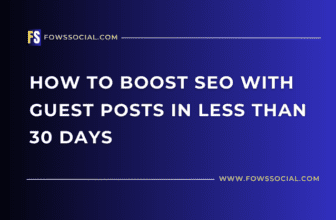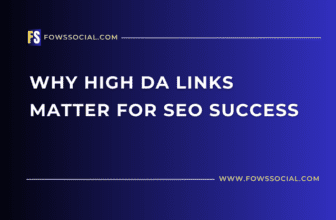How to Optimize Images for SEO Without Losing Quality
In the competitive realm of online marketing, search engine optimization (SEO) is essential for websites to draw organic traffic and enhance their visibility in search engine results. Although often neglected, optimizing images on a website is a crucial aspect of SEO. Images have the potential to enhance user experience, increase engagement, and improve SEO rankings. However, poorly optimized images can have adverse effects by slowing down a website’s loading speed and negatively affecting its search engine rankings. In this article, we will explore ways to optimize images for SEO without compromising quality.
1. Select the Appropriate Image Format
Optimizing images for SEO relies heavily on selecting the appropriate format. JPEG, PNG, and GIF are the most frequently used image formats online, each with its own advantages and disadvantages. It is crucial to select the correct format based on the type of image being utilized.
JPEG is the preferred image format for photographs and images with vibrant colors. Utilizing a “lossy” compression algorithm, it sacrifices some image data to decrease file size, resulting in a slight drop in quality but significantly smaller file sizes than other formats.
The PNG format is perfect for images containing text, logos, or graphics due to its support for transparent backgrounds. It utilizes a lossless compression technique, maintaining data integrity and producing high-quality images at the cost of larger file sizes.
The GIF format is widely used for animated images, but it is also suitable for static images. GIFs have transparency support and can be compressed to decrease file size. However, due to their limitation of 256 colors, GIFs may not be the best choice for images with a wide range of colors.
2. Reduce the size of images
Compressing images is crucial for SEO. By decreasing the file size without compromising quality, image compression enhances loading times and lowers bandwidth usage, positively impacting SEO.
There are two forms of image compression: lossy and lossless. Lossy compression reduces file size by discarding some image data, potentially leading to a slight decrease in quality that may not be noticeable to the human eye. On the other hand, lossless compression reduces image size without sacrificing any data, making it suitable for preserving high-quality and detailed images like logos and graphics.
Various tools exist for compressing images, including TinyPNG, Optimizilla, and ImageOptim. Users can upload images to these tools and compress them without sacrificing quality. It is crucial to strike a balance between file size and image quality to ensure that images are optimized for SEO.
Point 3: Utilize descriptive file names.
Optimizing images for SEO also involves utilizing descriptive file names. Search engines use file names to comprehend image content, making it crucial to incorporate relevant keywords. Instead of generic file names like “IMG1234.jpg,” opt for descriptive names such as “red-apple.jpg” or “best-laptop-deals.png.”
Moreover, it is crucial to use hyphens or underscores to separate words in file names in order to enhance readability. This practice not only helps search engines comprehend the image’s content but also enhances accessibility for visually impaired individuals who rely on screen readers for website navigation.
4. Enhance Alt Text to Improve Optimization
Alt text, also known as alternative text, is a short description of an image shown when the image cannot be loaded. It is used by screen readers to describe images to visually impaired users and is crucial for SEO as search engines rely on it to comprehend the image’s content and relevance to search queries.
To improve SEO, include relevant keywords in alt text that accurately describe the image’s content. Avoid generic terms like “image” and provide specific details such as subject, color, and context while keeping the alt text concise and descriptive.
Step 5: Implement Responsive Images
With the rise in mobile device usage for website access, it is crucial to optimize images for various screen sizes. Responsive images are those that adapt their size and resolution based on the viewing device, enhancing user experience, loading times, and SEO rankings.
Use CSS media queries to set various image sizes for different screen widths and utilize the “srcset” attribute in HTML to specify multiple image sources. This allows the browser to choose the most suitable image based on device capabilities. Utilizing responsive images ensures that your website appears visually appealing on all devices and enhances its SEO performance.
Step 6: Incorporate organized information.
Structured data, or schema markup, is a coding language that gives search engines additional information about a webpage. This extra information may include information like the page’s author, publication date, and images. Implementing structured data for images can enhance their presence in search engine results and increase organic traffic to your site.
To enhance the relevance and visibility of your images in search engine results, utilize schema markup like the “ImageObject” type to add structured data. This markup enables you to include more details about an image, like its URL, height, width, and caption.
Lazy Loading should be utilized.
Lazy loading is a strategy that postpones the loading of images until they are necessary. This can enhance page loading times, decrease bandwidth consumption, and potentially improve SEO. By implementing lazy loading for images, you can guarantee faster website loading speeds and deliver an improved user experience.
Lazy loading can be implemented by utilizing JavaScript libraries like LazyLoad or Intersection Observer API. These tools enable images to be loaded only when they become visible on the screen, which helps reduce loading times and boost SEO performance. With lazy loading, images can be optimized for SEO without compromising quality.
In summary, optimizing images for SEO is an essential part of website optimization that can have a big impact on search engine rankings and user experience. By selecting the correct image format, compressing images, giving them descriptive file names and alt text, creating responsive images, adding structured data, and utilizing lazy loading, images can be optimized for SEO without sacrificing quality. By adhering to these recommendations, you can enhance your website’s presence in search engine results and increase organic traffic.








